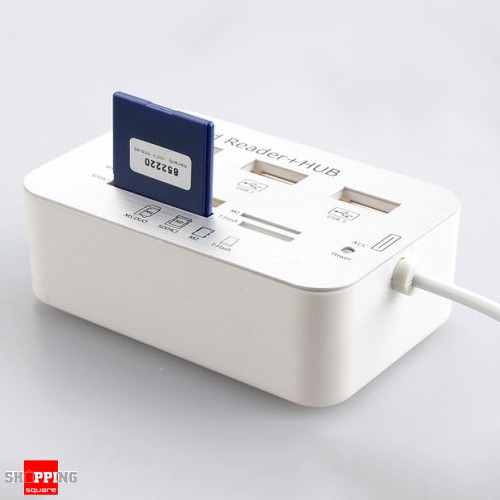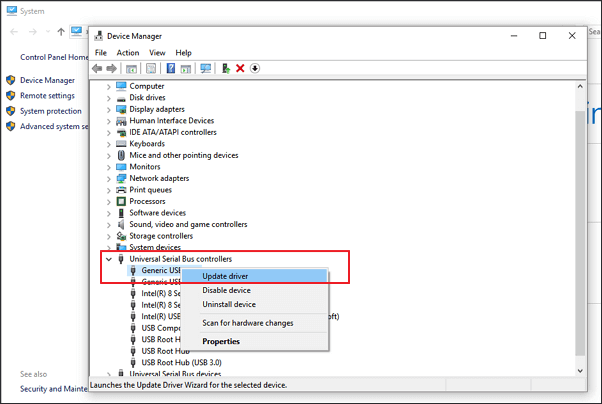Chipsbnk Sd Mmc Reader Drivers For Mac
Mac notebooks use the USB bus to communicate with the SD card slot. They have a maximum speed of up to 480Mbit/s.
Mac desktops use the PCIe bus to communicate with the SD card slot. Desktops can transfer data at a faster rate.

Check the packaging that came with your SD media to determine the maximum transfer rate that your specific card uses. To determine the maximum transfer speed of your Mac, you can use System Information. Choose Apple () menu About This Mac and then click System Report. If you use a Mac notebook:. Select Hardware, then select USB.
Select Internal Memory Card Reader and look for the Speed entry. If you use a Mac desktop computer:.

Select Hardware, then select Card Reader. Look for the Link Speed entry. Computers that use the PCIe bus express their speed as GT/s. However, most media manufacturers preformat the media using common block-and-cluster sizes that don’t approach the theoretical limits of a given file system. Most SD cards use the FAT32 file format, and preformatted FAT32 SD media is commonly available up to a capacity of 32GB.
Media that exceeds 32GB usually uses the exFAT file system, while some smaller capacity cards use the FAT16 file format. Preformatted FAT16 media is generally available up to a capacity of 2GB. If you use OS X Snow Leopard 10.6.5 or later, you can find out which file system you’re using:. Insert the media into the SD card slot. Choose Apple menu About This Mac. Click System Report.
In the Hardware section, click Card Reader, and find the File System field. Information about products not manufactured by Apple, or independent websites not controlled or tested by Apple, is provided without recommendation or endorsement. Apple assumes no responsibility with regard to the selection, performance, or use of third-party websites or products. Apple makes no representations regarding third-party website accuracy or reliability. Risks are inherent in the use of the Internet.
For additional information. Other company and product names may be trademarks of their respective owners.
If your SD card doesn’t appear in Windows File Explorer when you plug it into your PC’s card reader, don’t despair. This is a common Windows problem, and despite being very frustrating, it’s usually very easy to fix. Below is a list of the fixes that have worked for other Windows users. Start at the top of the list and work your way down until you find the fix that works for you. Method 1: Method 2: Method 3: Method 4: Method 5: Method 1: Update your drivers The most common cause of an unrecognized SD card is a faulty, incorrect or outdated card reader driver.
So the first thing you should do it check that your drivers are in good health. You can do this either manually or automatically: Manual driver update – You can update your drivers manually by going to the manufacturer’s website and searching for the most recent correct driver. Note that for some drivers, you may need to try both the manufacturer of your PC and also the manufacturer of the card reader itself. If you don’t have the time, patience or computer skills to update your drivers manually, you can, instead, do it automatically with.
Automatic driver update – Driver Easy will automatically recognize your system and find the correct driver for your card reader. You don’t need to know exactly what system your computer is running or who your card reader’s manufacturer. Nor do you need to risk downloading and installing the wrong driver, and you don’t need to worry about making a mistake when installing. You can simply update your card reader driver (all your drivers, actually!) automatically with either the FREE or the Pro version of Driver Easy. Team racing league torrent runterladen : torrent paragon ntfs for mac. But with the Pro version it takes just 2 clicks, and you get full support and a 30-day money back guarantee: 1) and install Driver Easy.
2) Run Driver Easy and click Scan Now button. Driver Easy will then scan your computer and detect any problem drivers. 3) Click the Update button next to all flagged devices to automatically download and install the correct version of their drivers (you can do this with the FREE version). Pay close attention to whether your card reader appears in the list. Or click Update All to automatically download and install the correct version of all the drivers that are missing or out of date on your system (this requires the Pro version – you’ll be prompted to upgrade when you click Update All). If your card still isn’t working after updating your drivers, move onto.
Method 2: Clean your SD card & reader Another very common cause of an unrecognized SD card is a very simple one: a dirty SD card or a dusty card reader. Either will cause a poor contact between card and reader. So the second thing you should do is give your card a clean, and remove any dust from the reader, then try the card again.
Mmc Sd Card Reader Driver
To clean your card, dip a cotton cloth in a little alcohol or water, and lightly wipe the dirty area, paying particular attention to the metal contacts. To clean your reader, use a compressed air device to blow the dust out of the reader. Alternatively, you can buy contact cleaner on Amazon, which you can use to clean the reader. If the card still doesn’t work, move onto. Method 3: Check if your card reader is disabled If you’ve tried methods 1 and 2, and your PC still isn’t recognizing your SD card, it’s possible your card reader is turned off in your BIOS. To check, restart your PC, and at the splash screen (the first screen you see after restarting), look for an instruction that tells you to press a certain key on your keyboard to enter your “BIOS” or “Settings” (e.g. F2 or Delete). Every motherboard manufacturer has their own unique BIOS with its own keyboard shortcut, so we can’t say exactly which key to press to get in.
Likewise all manufacturers organize their BIOS settings their own way; there’s no standard way of doing it. So we can’t tell you exactly what setting to change, and how to find that setting. But once you’re in the BIOS, it shouldn’t be too hard to find the ‘on/off’ switch for your card reader. Just look for a section related to devices or storage, and within that section look for something like “SD Reader” or “Card Reader”. Enable that setting if it’s not already enabled, then save and exit the BIOS.
(Be sure to save as you exit. Some manufacturers make it very easy to leave the BIOS without saving your changes, and if you do, you won’t have changed anything.) Once your computer has restarted and you’ve logged into Windows, test your card again. If it’s still not recognized, move onto. Method 4: Test your SD card in another PC If your SD card is faulty, your PC won’t recognize it. To check, you’ll need to locate another PC with a card reader, and test your SD card in that computer, to see if it works.
If your SD card doesn’t work in the other PC either, it’s probably faulty, and you’ll need to replace it. If it does work in the other computer, then it’s not a faulty card, but it may be that your card reader is faulty. Method 5: Disable then enable card reader (from other users) Thanks Alan Darlington for sharing this method. Which has worked for many users.

So if your SD card is still not showing up on your PC, try this method. Quote Alan Darlington’s words: “Easy solution for me: ASUS X551C, Win10, 16G SD: Go to device manager as above — when I do it there is no SD Host Adapters but there is Memory Technology Devices under which there is RealteK PCIE Card reader. Select this then click Driver then on the Disable, acknowledge the popup, then back at the driver screen click on the Enable and its popup — the SD card now appears as it did previously & is accessable. Don’t know why this works but it did for me.” If you’re not sure how to do that, refer steps below: 1) On your keyboard, press the Win+R ( Windows logo key and R key) at the same time to invoke the run box. 2) Type devmgmt.msc in the run box and click OK. 3) Expand category “ Memory Technology Devices“.
Double-click the card reader (In Alan’s case, it’s RealteK PCIE CardaReader. In your case, it may be different.) to open 4) Go to Driver tab. Click Disable Device. 5) When prompted to disable the device, click Yes. 6) Double-click the card reader to open the Properties windows.
Click Enable Device to re-enable the device. We hope these tips help you fix your unrecognized SD card problem.
Please comment below if you have any questions or suggestions. We’re always happy to hear of new solutions!